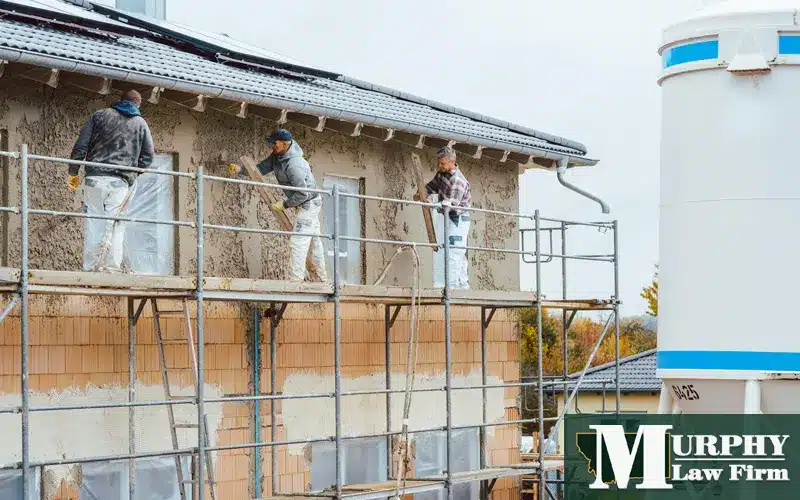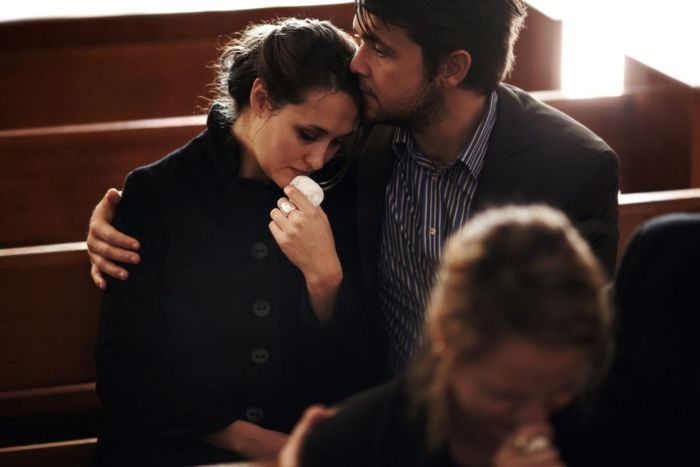
Understand your right to compensation and how to maximize your benefits after a fall from a ladder or scaffold at work
The growing number of construction projects in the Great Falls area in recent years has led to a number of ladder and scaffold accidents. These accidents often result in serious injuries that significantly impact workers’ lives. Fortunately, most injured Montana workers qualify for workers’ compensation benefits to help with medical expenses and lost wages during their recoveries.
If you’ve recently been injured in a ladder or scaffold accident in Great Falls, you probably have questions about your eligibility for workers’ compensation and the steps involved in filing a claim. This article will explain the workers’ compensation process and help you understand your rights and responsibilities when filing a work injury claim.
If you still have questions after reading this article or would like further assistance, reach out to the experienced workers’ compensation attorneys at Murphy Law Firm for a free consultation.
We have the answers you need to help you get the compensation you deserve.
How common are ladder and scaffold accidents?
In 2020 alone, the U.S. Bureau of Labor Statistics (BLS) estimates that workers experienced 22,710 non-fatal injuries and 161 deaths due to ladder accidents. That same year, 52 workers also died from accidents involving scaffolding.
The Occupational Safety and Health Administration (OSHA) estimates that about 4,500 work-related scaffold injuries and 50 fatalities could be prevented annually if better safety precautions and equipment were utilized.
OSHA says this would also result in significant financial savings for American businesses, amounting to about $90 million in workdays that would not be lost because of these incidents.
What are the most common accidents on scaffolding and ladders?
Ladders and scaffolding are used by a variety of Montana workers, including construction workers, utility workers and roofers, just to name a few. The most common accidents these workers experience while using scaffolding and ladders include the following:
- Falls from heights. This is the leading cause of scaffolding-related accidents. Workers may fall due to a lack of guardrails, faulty personal fall arrest systems, or simply slipping or tripping on the scaffold platform.
- Scaffold collapses. Improper assembly or overloading scaffolds can lead to collapses, posing a significant risk not only to workers on the scaffold but also to those below.
- Struck by falling objects. Workers or tools falling from scaffolds can strike individuals below. This type of accident often results from poor housekeeping on scaffolds, lack of toeboards or a failure to use tool lanyards.
- Ladder slips and falls. Missteps or loss of balance while climbing or descending ladders can lead to slip-and-fall accidents, often exacerbated by improper ladder placement or securing.
- Electrocutions. Scaffold and ladder setups near power lines pose a risk of electrocution, particularly if safety protocols regarding clearance distances are not followed.
- Overreaching or overbalancing on ladders. Workers reaching too far sideways or carrying heavy loads can lose balance and fall from ladders.
- Ladder collapse or breakage. This can occur due to using damaged or weak ladders or exceeding the weight limit.
These accidents underscore the importance of proper scaffold construction, adherence to weight limits, use of personal protective equipment like harnesses, and following safety protocols for working at heights.
What is the #1 injury when using scaffolding?
The most common cause of scaffold-related injuries is falls from heights. Depending on factors like the height from which a worker falls and the surface they land on, workers may experience these common types of severe and catastrophic injuries:
These injuries often require extensive medical treatment and may even result in permanent disability or death, making it crucial that workers and their affected families understand their rights to workers’ compensation benefits.
Compensation for accidental death on the job
Find out how to secure compensation for funeral expenses, loss of future wages, and other damages after the death of a loved one from a work injury.
Am I entitled to workers’ comp benefits after a scaffold or ladder accident in Montana?
Most employers in Montana with 1 or more employees are required to provide workers’ compensation insurance to their workers. This is a form of no-fault insurance, which means that you’re likely eligible for benefits after a work-related scaffold or ladder accident, even if the accident that led to the injury was your fault.
However, to qualify for benefits, you must be an employee, not an independent contractor.
If you’re unsure of your classification or if you believe your employer has misclassified you as an independent contractor, you should reach out to a workers’ compensation attorney who can explain your rights.
What types of workers’ comp benefits are injured Montana workers entitled to?
Eligible employees may be entitled to the following types of workers’ comp benefits after a work-related injury or illness in Montana:
- Medical benefits. These benefits cover all necessary medical treatments related to the work injury or illness. This includes hospital visits, surgeries, medications, physical therapy and any other required medical services. The goal is to help the injured employee recover and return to work.
- Wage loss benefits. These benefits provide compensation for lost wages if the injury or illness prevents the employee from working. They’re usually two-thirds of the employee’s regular wages and are intended to provide financial stability during the recovery period.
- Death benefits. These benefits are offered to the dependents of a worker who dies due to a work-related injury or illness. They typically include a portion of the deceased worker’s wages and may also cover funeral and burial expenses, providing financial support to the family during a difficult time.
Each of these benefits aims to support the recovery and well-being of injured workers or their families in the event of a work-related injury or tragic loss.
Montana workers’ compensation claims process
Learn the step-by-step instructions and time limits for filing a work injury claim in Montana.
What is the OSHA violation for scaffolding?
OSHA has extensive rules and regulations regarding the construction and use of scaffolding at worksites. This includes the rule that employees working on scaffolds more than 10 feet above a lower level must be protected from falls. Specific regulations outline the types of fall protection required for different scaffold types to ensure worker safety at elevated heights.
Employers who ignore OSHA’s scaffolding rules or fail to provide the necessary safety equipment to their workers may face citations, fines and even legal action for repeat offenses.
Can I sue my employer for a ladder or scaffold accident?
In most cases, workers’ compensation is the exclusive remedy for employees who suffer a ladder or scaffold accident at work, meaning that you generally cannot sue your employer for such accidents.
However, there are certain situations where you might be able to sue your employer outside the workers’ compensation system. This is typically only possible in cases where you can prove that your employer was at fault due to gross negligence or intentional harm, which is more challenging to demonstrate. Successfully proving such fault could potentially allow you to receive additional benefits, including compensation for pain and suffering.
For independent contractors, the situation is different, as they’re not typically covered by workers’ compensation insurance. If an independent contractor is injured in a ladder or scaffold accident, they may have the option to file a personal injury lawsuit against the party responsible for their injuries, which could be the employer or another entity like a property owner, depending on the circumstances of the accident.
It’s important to note that these legal actions can be complex and challenging, so it’s crucial to consult with an experienced work injury attorney to explore your legal options.
What if my workers’ compensation claim is denied?
Following a scaffolding or ladder injury, it’s not uncommon for employers to try to deny workers’ compensation benefits, especially if the worker failed to follow the necessary steps for filing a claim, like notifying their employer within 30 days of the injury.
Because of this, it’s crucial to understand your rights and responsibilities after an injury to ensure you don’t miss out on the compensation you deserve. If you have questions or want assistance with the process, reach out to a workers’ compensation attorney who can help you file your claim in a timely manner or file an appeal if your claim is wrongfully denied.
Injured in a ladder or scaffold accident in Montana? Murphy Law Firm can help.
If you’ve been injured in a ladder or scaffold accident, you don’t have to navigate the complexities of your claim alone. Murphy Law Firm in Great Falls is here to support you.
With more than 75 years of combined experience, our dedicated Montana work injury attorneys specialize in helping injured workers secure the compensation they rightfully deserve.
Whether you’re dealing with a workers’ compensation claim or exploring other legal options due to an accident, our knowledgeable team has the expertise and dedication to guide you through every step of the process. We understand the challenges you face and are committed to advocating for your rights and ensuring you receive the full benefits you’re entitled to.
Contact Murphy Law Firm today for a free consultation, and let our experienced attorneys help you on the road to recovery and justice.
References
1926.451 – General requirements. | Occupational Safety and Health Administration. (2023). Osha.gov. https://www.osha.gov/laws-regs/regulations/standardnumber/1926/1926.451#1926.451(a)(6)
Fatal injuries from ladders down in 2020; nonfatal ladder injuries were essentially unchanged : The Economics Daily: U.S. Bureau of Labor Statistics. (n.d.). www.bls.gov. https://www.bls.gov/opub/ted/2022/fatal-injuries-from-ladders-down-in-2020-nonfatal-ladder-injuries-were-essentially-unchanged.htm
Scaffolding – Overview | Occupational Safety and Health Administration. (n.d.). www.osha.gov. https://www.osha.gov/scaffolding





